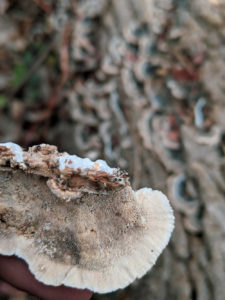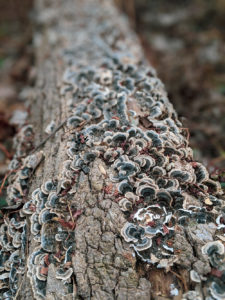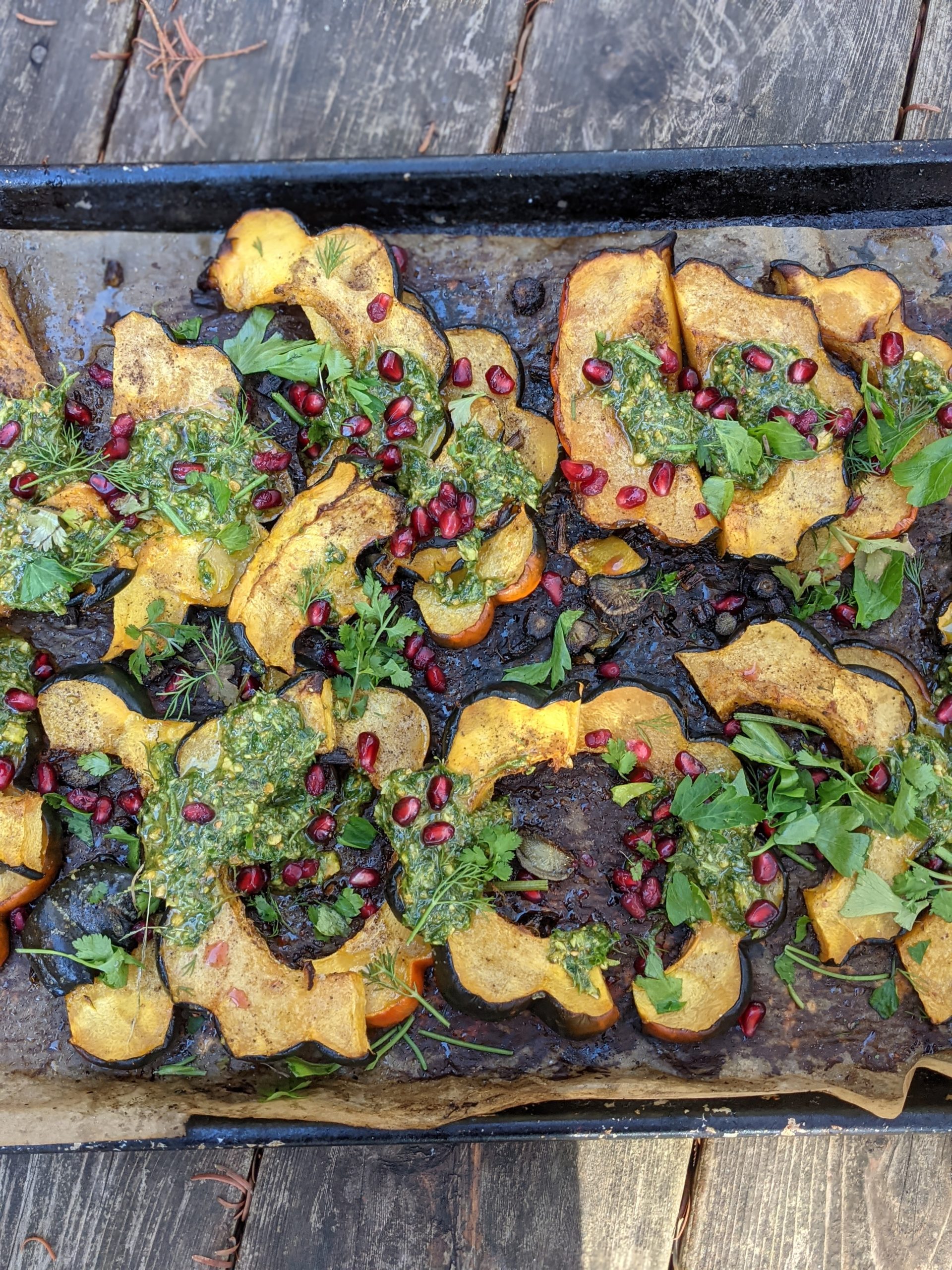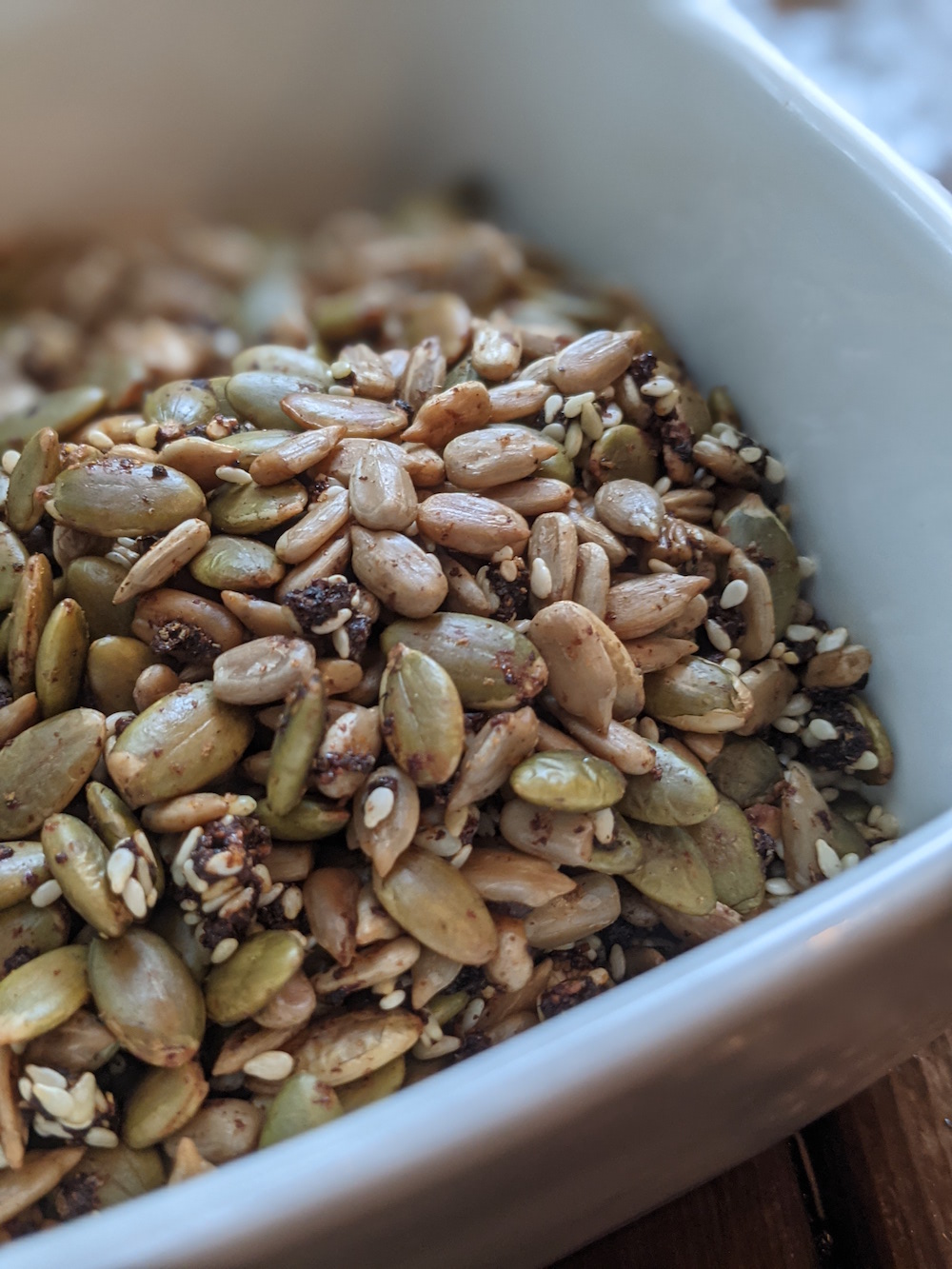Turkey tail is one of the few mushrooms I feel comfortable identifying and harvesting to use in our home. She grows wild on our land and over the years I’ve gotten really good at spotting her and knowing when to harvest her. I’m sharing what I’ve learned with you today because I consider this mushroom one of the staple medicines in our home that keeps us strong and resilient. In 2020 we’ve seen just how important a strong immune system is.
Before we get into identifying her, I want to shine a light on the medicine she provides for us.
Turkey tail is known to support your immune system in killing viruses and harmful bacteria, killing cancer cells, helping to stop inflammation in the body and supporting the body’s natural defenses against foreign substances. Basically she is a powerhouse of strength for the body’s immune system
Identifying and harvesting Turkey tail
Again, I will stress that I’m not a mushroom expert but I’ll tell you what identifiers I use based on the experts I’ve learned from. I find compared to other types of mushrooms, she’s pretty easy to safely identify.

-
Turkey tail has concentric color zones and they should be distinguishable – meaning you should be able to easily see where one color stops and the other starts.
-
A true turkey tail has pores on the underside that are small and almost barely visible.
-
The cap of the mushroom should be fuzzy – not super hairy but fuzzy to the touch
-
The colors of the turkey tail can vary but should be brown, redish brown, grey or white with concentric color zones.
When I harvest turkey tail, I like to look for vibrant fresh looking caps. If they are brittle, fading in color and looking dingy, I know I’ve missed the window. I find here in Indiana I tend to find vibrant colonies of this mushroom in both the Spring and Fall. They grow on dead or fallen trees and you’ll see them growing usually in colonies. I find you can sometimes easily just pull them off the log but sometimes I do use my foraging knife to assist in pulling them off the tree.
Like anything we forage in the wild, it’s so important to leave some behind. I never harvest all of anything I forage. I always leave some behind for the animals, the earth and the plant or fungi itself to continue reproducing. Turkey tail is actually known for benefiting the soil and pulling certain types of toxins out of the environment in which she grows. Foraging for me is a sacred activity. I like to say words of gratitude while I harvest – to the plant or fungi and to the land. And lastly I only forage what I need and/or will use.
Using Turkey Tail
-
I dry my turkey tail once I get it home. I find laying it out on a screen it will dry completely in a few days. It dries fast. But you can also dehydrate them.
-
I then store the dried mushroom and add it to an herbal tea brew – I like to make sure the water gets up to boiling to make sure the medicine can extract.
-
I’ll add a cap to my cooking rice, beans or soup and pull it out once whatever I’m cooking is ready to serve. This long exposure to highly heated water helps extract the medicine from the mushroom.
-
You can also tincture your turkey tail – basically extracting the medicine into alcohol.
This is one of the methods I teach in our Medicine Woman Membership – how to layer our medicine into our dishes so that for example, our rice isn’t just rice but also layered with immune strengthening turkey tail.
I find that turkey tail will add an earthy flavor to a tea but fairly mild. When cooked in a soup or beans or rice, I can’t taste it at all.
And lastly the act of harvesting these mushrooms and brining them into my kitchen to support my health and my family’s health is deeply satisfying. It’s one way I’m cultivating our health freedom. No stores needed – just time in the forest.

Sending you Gaia Blessings and happy foraging!
Audrey
**** Disclaimer – This blog is not medical advice but simply passing along of wisdom gathered by our human ancestors and passed down through story, writings and actual use of this fungi. Always make sure you 100% know what you are harvesting before you ever use something in your home for food or medicine. ****
We dive deep into getting to know Turkey Tail…along with so many other plants and herbs and fungi in my program, Medicine Woman. This online course helps you weave plant knowledge into wisdom and to bring the medicine of our wild herbs into your every day life. This includes how to identify and harvest wild plants and how to make remedies and medicines with them as well as layer their medicine into your meals. I also teach practical tips on how to grow your own food and medicine using Earth-based and permaculture practices.
Follow me on Instagram as I share photos, musings and recipes on how plants, natural wellness, mothering and more.
Sign up HERE to get your free plant-based recipe e-book of some of my favorite dishes and tips on how to create true health freedom.
Check out my Medicine Woman membership to learn how to make your own herbal remedies at home and so much more.
You can check out my sped up video of harvesting Turkey tail here.
Sources:
6 Simple Turkey Tail Mushroom Identification Tips & Uses
National Audubon Society Field Guide to North American Mushrooms (National Audubon Society Field Guides)




got any tips on grinding them up to make a “dust” to add to soups? Can they just be chewed raw, or must they be boiled/cooked?
Thank you for your help in my learning mushrooms.